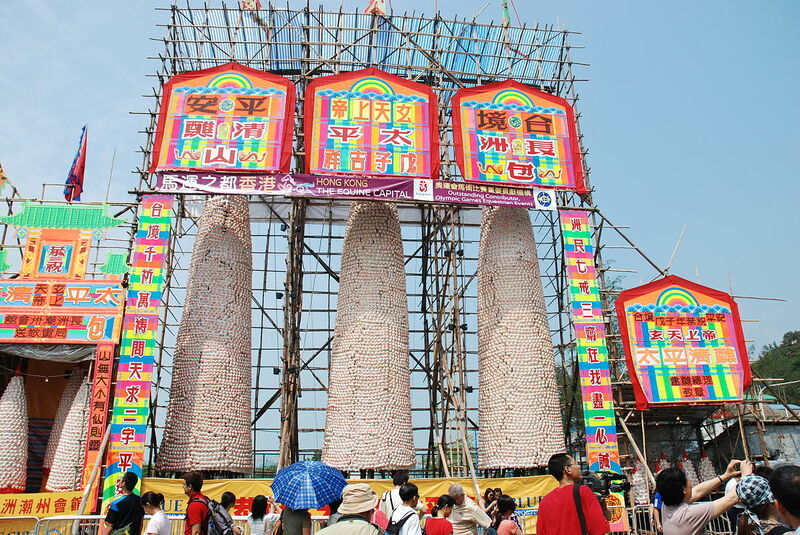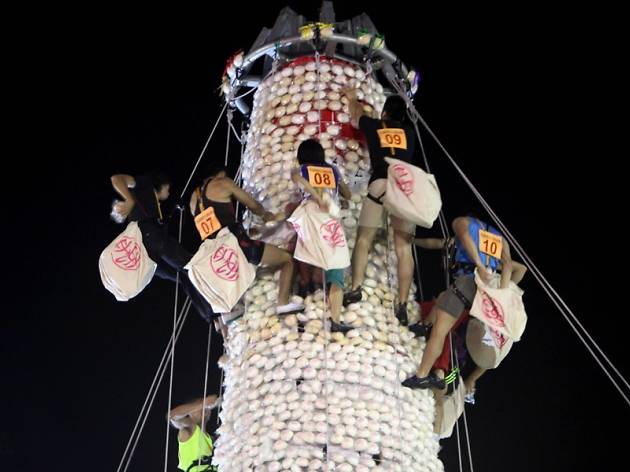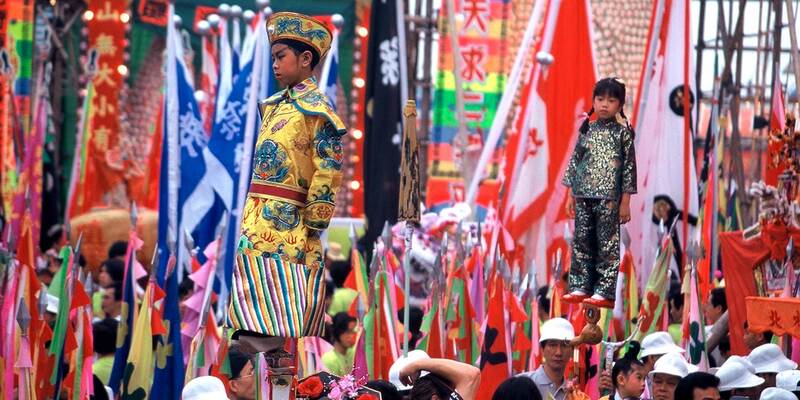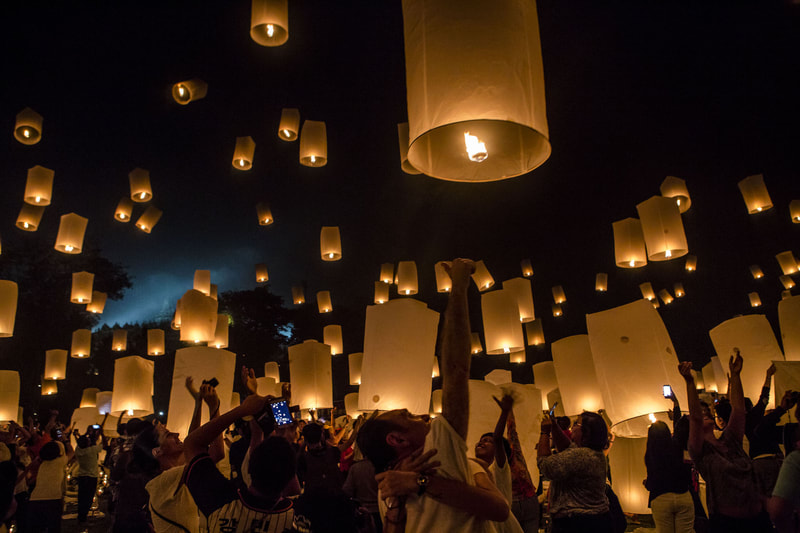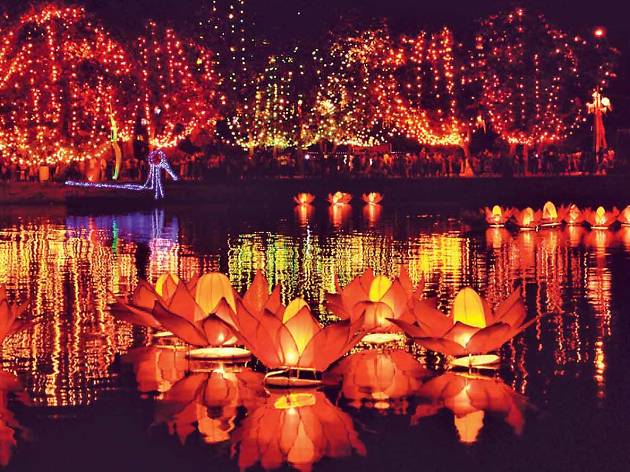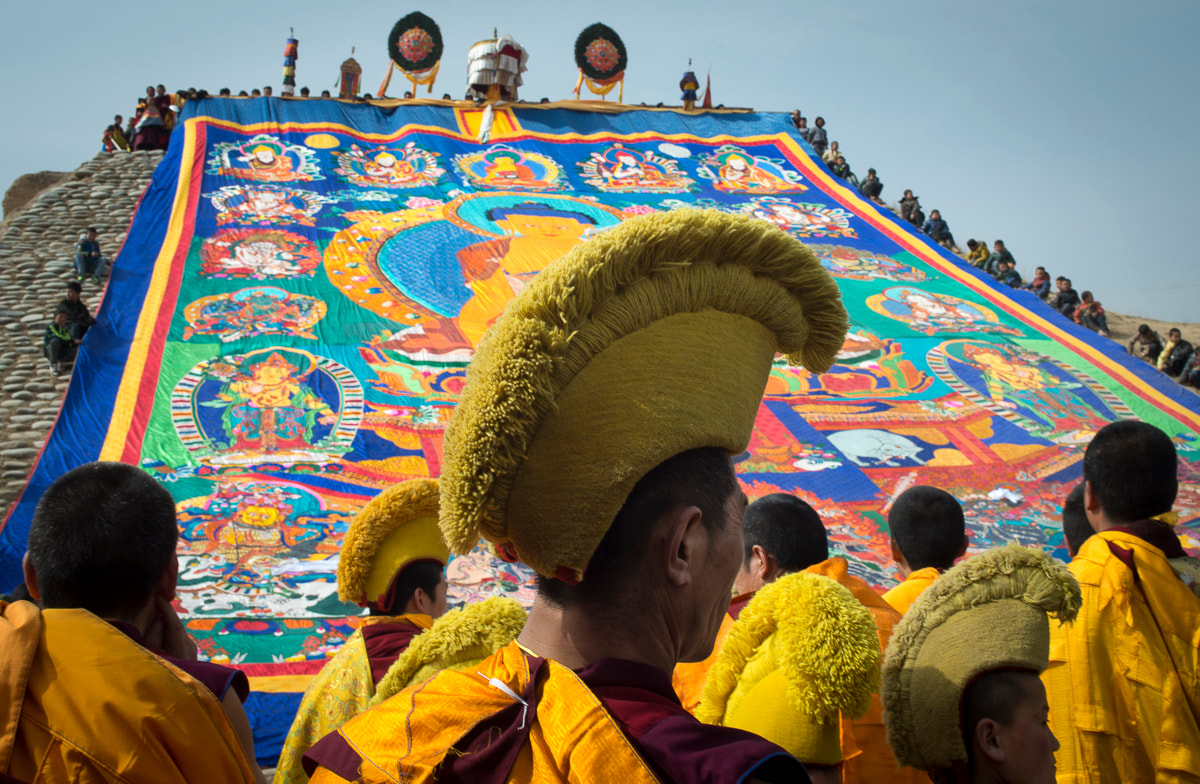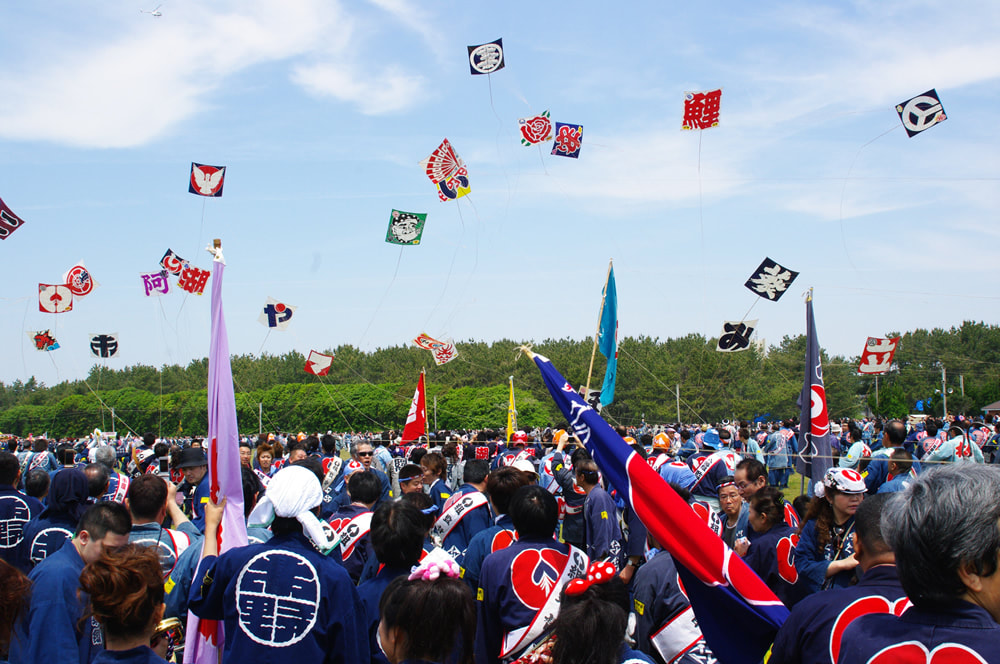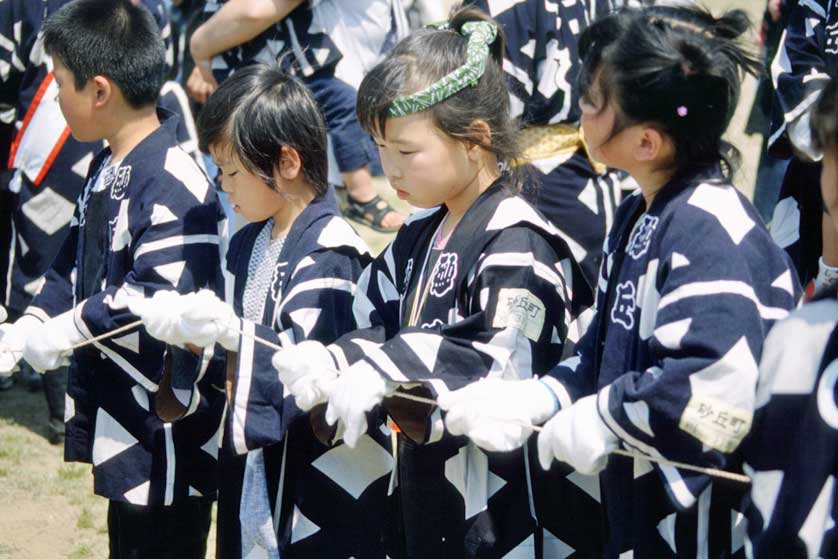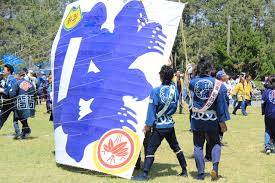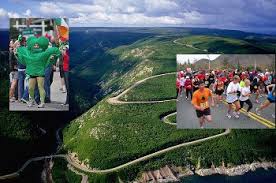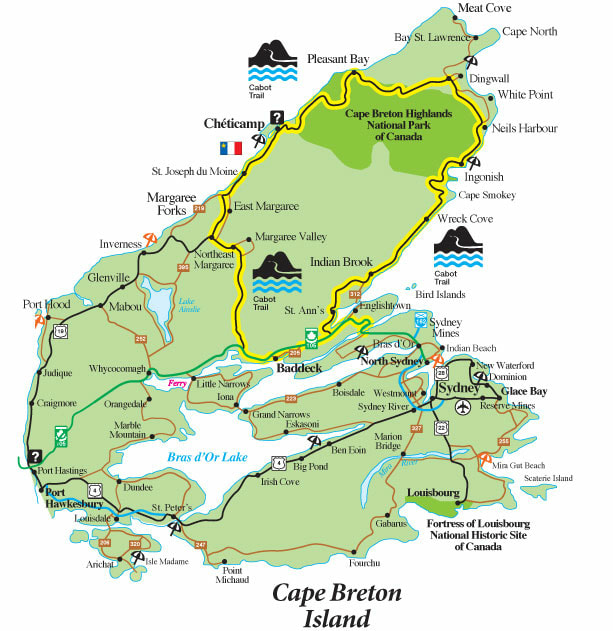"Now that may is here, along with flowers, new festivals are blossoming as well"-Makenna Arase
It’s said that April showers bring May flowers, and along with the new blossoms, comes fresh festivals around the world! Reaching from Canada all the way to Japan, May has much to deliver, and today we’re going to unpack a small handful. If you’re thinking about travel plans, now would be a good time to get out your calendar.
Cheung Chau Bun Festival
Located on Cheung Chau Island, a tiny landmass about 40 minutes from Hong Kong’s central district, is a festival that has rather tragic origins. According to Culture Trip’s “The History of the Cheung Chau Bun Festival In 1 Minute”, “During the Qing Dynasty, the island of Cheung Chau befell a devastating plague, so (in one legend) the locals built an altar in front of the Pak Tai temple in hopes that the god, Pak Tai (a Taoist deity) would drive away the evil spirits that had taken hold of their people and land. They also paraded around with a statue of the god to prevent future plagues, as well as bless the island with good luck. Thankfully, the gods listened and the plague finally ended.”
Continued from the article is another tale, “In another legend, the people thought that the ghosts were hungry, so they made the sesame-paste-filled buns that make the festival famous today.” The people of the island kept the tradition alive and eventually added more and more aspects, including Cantonese Opera performances, lion dances, parades and the grand attraction: a bun scrambling race up a 45-foot-tall pole. Interested yet?
From Anthony Bourdain Parts Unknown’s “Everything you need to know about Hong Kong’s rowdy bun festival”, “Competitors who have undergone a two-part selection process are donned with ropes, harnesses, gloves and white bags for the buns. They are led into a field with four enormous towers. Three of which are for decoration, with the fourth being the one they will climb. Originally these towers were made of bamboo, but after an incident in 1978 where a tower toppled under the weight of 200 people and injured 100, they are now constructed from steel. Another change is that the buns are now made from plastic and not actually edible to stop the food waste. However, that doesn’t stop the 12 final competitors from scrambling up the tower and back down within seconds.” The bun scrambling race is a large part of the cultural atmosphere surrounding the festival, and the people of Cheung Chau take it very seriously. This is not all that the people of Cheung Chau have to offer, though.
Another attraction is the parade. Kept alive from the time it was simply a wooden statue, the parade now known as, “Piu Sik (Floating Colors) Parade,” is filled with gongs, drums, lion dances, effigies and costumed children. It takes place several hours before the bun scrambling competition and wraps around through the narrow streets, trailing behind paper mache. The festival draws in crowds of 40,000 visitors, twice the population of the small island.
In case you actually do have your calendars out, this year’s festival will take place from Thursday, May 9th through Monday, May 13th.
Cheung Chau Bun Festival
Located on Cheung Chau Island, a tiny landmass about 40 minutes from Hong Kong’s central district, is a festival that has rather tragic origins. According to Culture Trip’s “The History of the Cheung Chau Bun Festival In 1 Minute”, “During the Qing Dynasty, the island of Cheung Chau befell a devastating plague, so (in one legend) the locals built an altar in front of the Pak Tai temple in hopes that the god, Pak Tai (a Taoist deity) would drive away the evil spirits that had taken hold of their people and land. They also paraded around with a statue of the god to prevent future plagues, as well as bless the island with good luck. Thankfully, the gods listened and the plague finally ended.”
Continued from the article is another tale, “In another legend, the people thought that the ghosts were hungry, so they made the sesame-paste-filled buns that make the festival famous today.” The people of the island kept the tradition alive and eventually added more and more aspects, including Cantonese Opera performances, lion dances, parades and the grand attraction: a bun scrambling race up a 45-foot-tall pole. Interested yet?
From Anthony Bourdain Parts Unknown’s “Everything you need to know about Hong Kong’s rowdy bun festival”, “Competitors who have undergone a two-part selection process are donned with ropes, harnesses, gloves and white bags for the buns. They are led into a field with four enormous towers. Three of which are for decoration, with the fourth being the one they will climb. Originally these towers were made of bamboo, but after an incident in 1978 where a tower toppled under the weight of 200 people and injured 100, they are now constructed from steel. Another change is that the buns are now made from plastic and not actually edible to stop the food waste. However, that doesn’t stop the 12 final competitors from scrambling up the tower and back down within seconds.” The bun scrambling race is a large part of the cultural atmosphere surrounding the festival, and the people of Cheung Chau take it very seriously. This is not all that the people of Cheung Chau have to offer, though.
Another attraction is the parade. Kept alive from the time it was simply a wooden statue, the parade now known as, “Piu Sik (Floating Colors) Parade,” is filled with gongs, drums, lion dances, effigies and costumed children. It takes place several hours before the bun scrambling competition and wraps around through the narrow streets, trailing behind paper mache. The festival draws in crowds of 40,000 visitors, twice the population of the small island.
In case you actually do have your calendars out, this year’s festival will take place from Thursday, May 9th through Monday, May 13th.
Vesak Day
This holiday’s heart is located at Borobudur Temple in Java, Indonesia. Also known as Waisak Day, it celebrates the birth, enlightenment and death of Buddha.
The life story of the Buddha is something you’ve probably been taught in school one year or another, but astro ulagam’s “The Life Story of Buddha And The Significance of Vesak Day” is here to remind you in case you forgot. “Originally born as Prince Siddhartha Gautama in Lumbini, Nepal, he was destined to either become a great king or a spiritual leader. His parents wanted him to become a great king, and therefore prevented him from seeing the suffering of the common people. He grew up surrounded by more luxury than he could dream of, and had access to many types of sports. This led him to win his wife, Yasodhara in an archery contest. At 29 years old, Siddhartha witnessed suffering for the first time. He saw a very sick old man and a dead person while outside his palace one day. He grew emotional that he couldn’t do anything for them, and realized that every person will go through sickness, old age, and eventually death. He left his life of luxury, and for six years, he mastered the art of meditation, and decided to stay meditating at a place called Bodhgaya, beneath a Bodhi tree until he realized the mind’s true nature.”
The fact that Siddhartha had chosen to focus on the mind is what sets his teachings aside from many others. In Buddhism, there isn’t a supreme god to acknowledge, like in Christianity or Islam. Followers focus more on finding inner peace and wisdom, and embrace concepts such as karma and reincarnation. Though the Buddha is the original founder, he is still not regarded as a god. In fact, the word, “Buddha” means “enlightened”.
“Eventually he reached enlightenment during a full moon in May, a week before he turned 35. He learned that ignorance is the ultimate obstacle for the mind, and needs to be removed so things like greed, anger, arrogance and jealousy could also be erased. On that day he became Buddha, the Awakened One. Eventually, at the age of 80, in the month of May, Buddha passed away.”
The Buddha’s teachings had affected many people’s lives, and leading up to his death, he had grown quite a large following. They took what they had learned from him and ascended it into “Buddhism”, a way of life that is shared among thousands of people.
The first celebration was held in 1938, and it always happens on the full moon of May. Hundreds upon thousands of monks gather at temples to meditate and chant sutras. Activities include cultural performances with song and dance, plays about the Buddha’s life and teachings, and public messages given by religious and community leaders. Temples are covered with decorations and flowers, and some community groups organize charity acts, like releasing caged animals or donating food to the poor. But perhaps the most impressive celebration are the release of sky lanterns. The lanterns are a symbol of light and enlightenment (like the Buddha’s teachings), and are lit up and released into the sky.
The date for this year is Sunday on May 19, however dates may vary depending on which country you go to. Even though Java is the heart of this holiday, as the holiday is widespread all over Asia.
In China and Hong Kong, they follow the Chinese Lunar Calendar, celebrate Vesak Day (or Buddha Day) on the eighth day of the fourth month, which is typically in early May.
According to CNN Travel’s “Vesak Day: Celebrating the Life of Buddha”, “In Sri Lanka, people decorate their homes with paper lanterns, in Ipoh, Malaysia, Buddhist devotees a ritual called, “Sunning Buddha.” This ritual takes place at Ipoh Enlightened Heart Tibetan Buddhist temple, where monks place a sacred Tibetan Buddhist painting (called a “Thangka”) in the sun to absorb its powers. The energy is believed to promote peace, health and harmony for the rest of the year.”
Before we get to our last example, some honorable mentions: In China, there is a ceremony called, “Bathing the Buddha” where water is poured over an infant statue of the Buddha. In Cambodia, the Buddhist flag is raised above temples and paraded around the streets by monks. In Vietnam, parades and lanterns fill the streets.
Finally, “In Nepal, where the Buddha was born, thousands of people gather at Lumini, his exact birthplace, where they donate supplies to disadvantaged communities and pay tribute to monasteries.”
This holiday’s heart is located at Borobudur Temple in Java, Indonesia. Also known as Waisak Day, it celebrates the birth, enlightenment and death of Buddha.
The life story of the Buddha is something you’ve probably been taught in school one year or another, but astro ulagam’s “The Life Story of Buddha And The Significance of Vesak Day” is here to remind you in case you forgot. “Originally born as Prince Siddhartha Gautama in Lumbini, Nepal, he was destined to either become a great king or a spiritual leader. His parents wanted him to become a great king, and therefore prevented him from seeing the suffering of the common people. He grew up surrounded by more luxury than he could dream of, and had access to many types of sports. This led him to win his wife, Yasodhara in an archery contest. At 29 years old, Siddhartha witnessed suffering for the first time. He saw a very sick old man and a dead person while outside his palace one day. He grew emotional that he couldn’t do anything for them, and realized that every person will go through sickness, old age, and eventually death. He left his life of luxury, and for six years, he mastered the art of meditation, and decided to stay meditating at a place called Bodhgaya, beneath a Bodhi tree until he realized the mind’s true nature.”
The fact that Siddhartha had chosen to focus on the mind is what sets his teachings aside from many others. In Buddhism, there isn’t a supreme god to acknowledge, like in Christianity or Islam. Followers focus more on finding inner peace and wisdom, and embrace concepts such as karma and reincarnation. Though the Buddha is the original founder, he is still not regarded as a god. In fact, the word, “Buddha” means “enlightened”.
“Eventually he reached enlightenment during a full moon in May, a week before he turned 35. He learned that ignorance is the ultimate obstacle for the mind, and needs to be removed so things like greed, anger, arrogance and jealousy could also be erased. On that day he became Buddha, the Awakened One. Eventually, at the age of 80, in the month of May, Buddha passed away.”
The Buddha’s teachings had affected many people’s lives, and leading up to his death, he had grown quite a large following. They took what they had learned from him and ascended it into “Buddhism”, a way of life that is shared among thousands of people.
The first celebration was held in 1938, and it always happens on the full moon of May. Hundreds upon thousands of monks gather at temples to meditate and chant sutras. Activities include cultural performances with song and dance, plays about the Buddha’s life and teachings, and public messages given by religious and community leaders. Temples are covered with decorations and flowers, and some community groups organize charity acts, like releasing caged animals or donating food to the poor. But perhaps the most impressive celebration are the release of sky lanterns. The lanterns are a symbol of light and enlightenment (like the Buddha’s teachings), and are lit up and released into the sky.
The date for this year is Sunday on May 19, however dates may vary depending on which country you go to. Even though Java is the heart of this holiday, as the holiday is widespread all over Asia.
In China and Hong Kong, they follow the Chinese Lunar Calendar, celebrate Vesak Day (or Buddha Day) on the eighth day of the fourth month, which is typically in early May.
According to CNN Travel’s “Vesak Day: Celebrating the Life of Buddha”, “In Sri Lanka, people decorate their homes with paper lanterns, in Ipoh, Malaysia, Buddhist devotees a ritual called, “Sunning Buddha.” This ritual takes place at Ipoh Enlightened Heart Tibetan Buddhist temple, where monks place a sacred Tibetan Buddhist painting (called a “Thangka”) in the sun to absorb its powers. The energy is believed to promote peace, health and harmony for the rest of the year.”
Before we get to our last example, some honorable mentions: In China, there is a ceremony called, “Bathing the Buddha” where water is poured over an infant statue of the Buddha. In Cambodia, the Buddhist flag is raised above temples and paraded around the streets by monks. In Vietnam, parades and lanterns fill the streets.
Finally, “In Nepal, where the Buddha was born, thousands of people gather at Lumini, his exact birthplace, where they donate supplies to disadvantaged communities and pay tribute to monasteries.”
Hamamatsu Kite Festival
Held in Hamamatsu, Japan, on the Nakatajima Sand Dunes is a kite festival that has deep roots in its country’s history. The first festival took place in 1558 to celebrate the birth of the Hamamatsu castle’s son. The lord and his advisors flew a kite with the name of the boy written on it. In the middle of the Edo era (1603-1868) the tradition started up again, this time all over Japan. People traditionally pray for and celebrate the first boy’s health and bright futures, but now girls are included as well.
Taken from a first-hand account from Japan Visitor’s “Hamamatsu Kite Festival”, “For the festival, people from different neighborhoods set up rectangular, white tents where they house two meter square kites. The name of the first-born child’s name is written on the kite, and a team of kite flyers make their way onto the field. Each neighborhood is allowed one kite in the air at a time, though the sky is still filled with flying colors. Once the kites have reached a good height, drum and bugle corps start playing, and everyone starts to chant, “Oisho! Oisho!” The rising of a kite is a symbolic gesture, and no one dares attack one in its maiden flight. It would usher in ill omens.” In summary, the purpose of the festival is to strengthen relationships between the people of each neighborhood, and with the stands full of food, the children running around in happi coats, and the overall warm atmosphere of the festival, it certainly does a good job.
The celebrations are held from May 3rd to May 5th, and on the third day is when any battles happen. Children are handed control of the kites, and lines are purposely crossed in an attempt to bring them down. The real techniques of kite fighting have been long lost, but this children’s game still invigorates the same attitude of excitement. After half an hour of battling, the regular kite teams come back to the field and lift the kites in peace.
Held in Hamamatsu, Japan, on the Nakatajima Sand Dunes is a kite festival that has deep roots in its country’s history. The first festival took place in 1558 to celebrate the birth of the Hamamatsu castle’s son. The lord and his advisors flew a kite with the name of the boy written on it. In the middle of the Edo era (1603-1868) the tradition started up again, this time all over Japan. People traditionally pray for and celebrate the first boy’s health and bright futures, but now girls are included as well.
Taken from a first-hand account from Japan Visitor’s “Hamamatsu Kite Festival”, “For the festival, people from different neighborhoods set up rectangular, white tents where they house two meter square kites. The name of the first-born child’s name is written on the kite, and a team of kite flyers make their way onto the field. Each neighborhood is allowed one kite in the air at a time, though the sky is still filled with flying colors. Once the kites have reached a good height, drum and bugle corps start playing, and everyone starts to chant, “Oisho! Oisho!” The rising of a kite is a symbolic gesture, and no one dares attack one in its maiden flight. It would usher in ill omens.” In summary, the purpose of the festival is to strengthen relationships between the people of each neighborhood, and with the stands full of food, the children running around in happi coats, and the overall warm atmosphere of the festival, it certainly does a good job.
The celebrations are held from May 3rd to May 5th, and on the third day is when any battles happen. Children are handed control of the kites, and lines are purposely crossed in an attempt to bring them down. The real techniques of kite fighting have been long lost, but this children’s game still invigorates the same attitude of excitement. After half an hour of battling, the regular kite teams come back to the field and lift the kites in peace.
Cabot Trail Relay Race
Located in Cape Breton, Canada, 70 teams from both Canada and the US compete, and more than 1000 runners participate. Founded in 1988, it takes place from May 25 to May 26 and stretches 185 miles, with 17 stages filled with difficult but beautiful terrain. It goes through the steep mountains in the Cape Breton Highlands National Park, small towns and finally ending in the Margaree Valley. According to the Cabot Trail Relay Race’s site, “Runners must be at least 18 years old, as well as prepared for all weather conditions, and be able to run 9:30 minutes per mile. If a runner doesn’t complete a leg within the given time frame, the entire team is given the slowest runner’s time, plus five minutes. Though typically a different person runs each leg, runners can compete in multiple legs.” It is 24 hours filled with nothing but running, even in the dark!
Located in Cape Breton, Canada, 70 teams from both Canada and the US compete, and more than 1000 runners participate. Founded in 1988, it takes place from May 25 to May 26 and stretches 185 miles, with 17 stages filled with difficult but beautiful terrain. It goes through the steep mountains in the Cape Breton Highlands National Park, small towns and finally ending in the Margaree Valley. According to the Cabot Trail Relay Race’s site, “Runners must be at least 18 years old, as well as prepared for all weather conditions, and be able to run 9:30 minutes per mile. If a runner doesn’t complete a leg within the given time frame, the entire team is given the slowest runner’s time, plus five minutes. Though typically a different person runs each leg, runners can compete in multiple legs.” It is 24 hours filled with nothing but running, even in the dark!

